Introduction
Land acquisition remains a pivotal and often contentious issue across the globe, reflecting the intricate balance between public interest and private rights. The historical evolution of land acquisition laws, such as the Indian Land Acquisition Act of 1894, reveals the complexities and challenges associated with governmental land requisition for public use. These laws have undergone significant transformations to address issues of fairness, compensation, and transparency.
The amendment and evolution of these laws, including the landmark Land Acquisition Act of 2013 in India, illustrate ongoing efforts to protect landowners' rights while facilitating economic development.
This article delves into the historical background of land acquisition acts, examining key legislative frameworks and their impacts. It also explores the challenges and controversies that have arisen under these laws, particularly focusing on inadequate compensation and disputes among affected communities. Additionally, the article highlights significant amendments and developments post-independence, showcasing a shift towards more equitable land acquisition practices.
Finally, it offers a comparative look at international perspectives on land acquisition, emphasizing the importance of fair, transparent, and inclusive processes in modern legal systems.
Historical Background of Land Acquisition Acts
The process of obtaining territory has a lengthy and intricate background, grounded in the need for authorities to acquire space for communal purposes or economic progress. This method has evolved significantly over the centuries, shaped by varying societal values and economic needs. For instance, the case of Bruce’s Beach in 1912, where Willa and Charles Bruce built a resort for Black Americans only to have it seized through eminent domain by the city of Manhattan Beach, highlights how legal frameworks have been used to enforce property acquisition, sometimes controversially.
Across time, various societies have formulated regulations and methods to handle property conflicts and guarantee organized expansion. The modern legal frameworks we see today are a culmination of these evolving practices. For instance, the recent modification to Vietnam’s Property Law, which was approved with a significant majority, reflects modern methods of ownership, entitlements, and obligations.
Economic theories also offer understanding of property procurement dynamics. Models such as those discussed by Matthew J. Baker and Jonathan Conning illustrate how territory in rural and urban economies is valued differently, emphasizing the importance of efficient resource management and the impact of policy and institutional environments on property rights.
As urban development continues to grow, the necessity for strategic property procurement becomes even more essential. 'The transition from communal holding to private ownership, driven by factors like population density and technological advancements, underscores the ongoing evolution of property acquisition practices.'. Contemporary academics and decision-makers must navigate these complexities to balance economic development with fair distribution of resources.
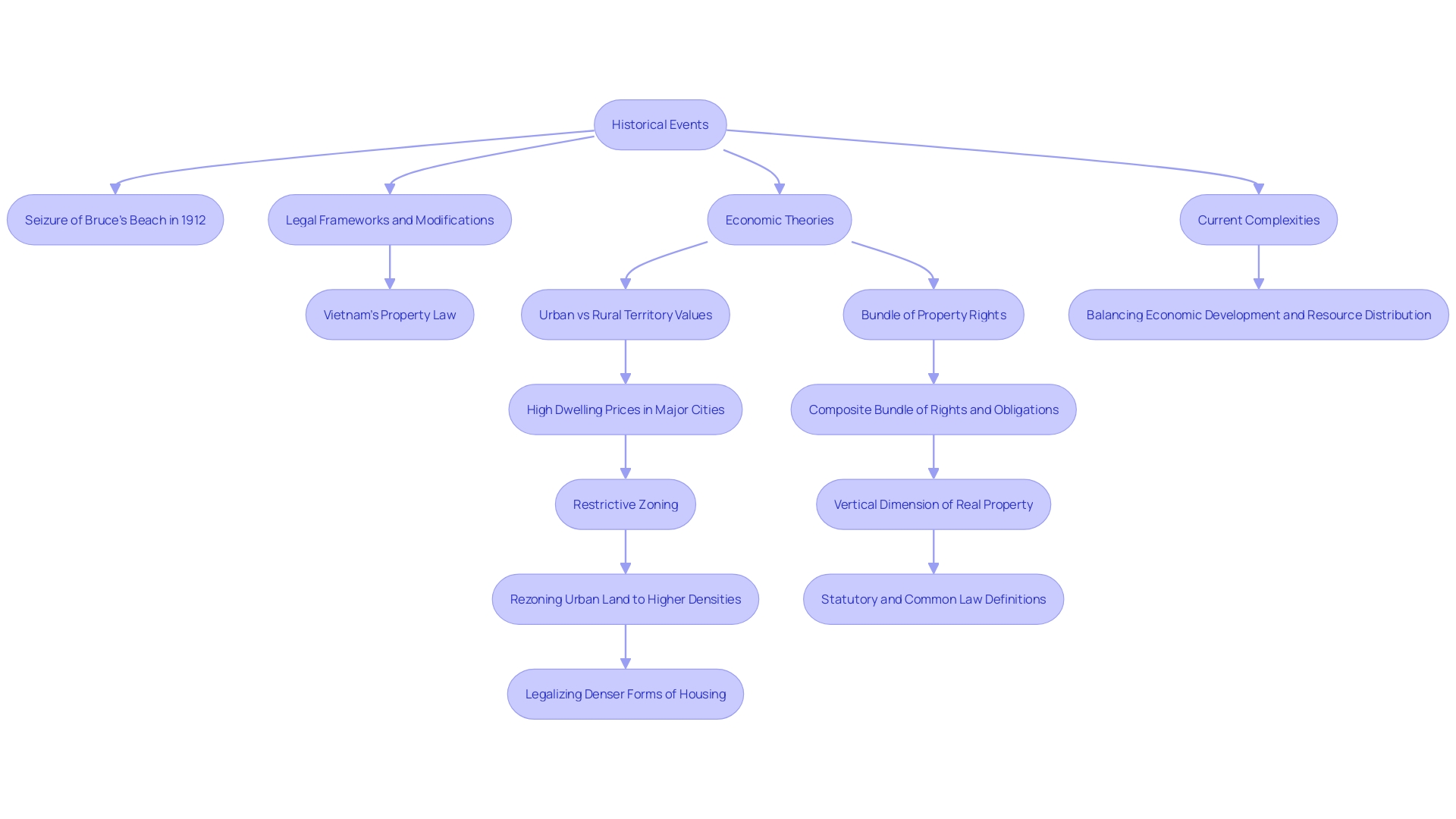
The Indian Land Acquisition Act of 1894
The Land Acquisition Act of 1894 marked a pivotal moment in India's legislative history, designed to streamline the governmental process of acquiring property for public use. Enacted during the British colonial period, the Act primarily aimed to facilitate infrastructure development, such as the construction of railways and roads, crucial for economic integration. However, the Act often resulted in minimal compensation for landowners, raising significant concerns about fairness and equity.
This legislative framework laid the groundwork for the expansion of connectivity, particularly in rural areas. By improving road networks, the intention was to unlock new productive opportunities, although this often coincided with chronic financing challenges. In rural economies, where nearly half of the world's population resides, the lack of formal financial institutions forces residents to rely on informal moneylenders with exorbitant interest rates.
Despite the theoretical benefits of improved connectivity, such as better access to markets and services, the practical outcomes have been mixed. For instance, in rural and urban property markets, the relative pricing and usage of space reflect deeper systemic issues, including policy implementation at various administrative levels. The historical legacy of the Acquisition Act thus underscores the complexities and ongoing debates around property use, compensation, and economic development in India.

Challenges and Controversies Under the 1894 Act
The 1894 Act faced significant challenges and controversies, primarily due to its provisions that often favored the government over landowners. Critics argued that the compensation offered was inadequate, leading to disputes and dissatisfaction among affected communities. This inadequacy in compensation was a significant point of disagreement, as demonstrated in the case of Bruce’s Beach, where the government seized property through eminent domain with little consideration for the owners' interests. The Act’s provisions were viewed as exploitative, prompting calls for reform to better protect landowners. 'This sentiment for reform is echoed in the recent amendments to the Property Law in Vietnam, which aims to address similar issues by specifying the ownership regime, rights, and responsibilities more clearly.'. These changes indicate a worldwide acknowledgment of the necessity for more equitable property procurement methods.

Evolution and Amendments of the Land Acquisition Act
The Land Acquisition Act has seen substantial amendments over the years to rectify the initial limitations of the 1894 framework. These legislative changes have focused on improving compensation mechanisms, integrating social impact assessments, and ensuring greater transparency throughout the acquisition process. For instance, the revised Property Law, consisting of 16 chapters and 260 articles, was passed with an overwhelming majority in the National Assembly, reflecting a significant step towards unified resource management and equitable treatment of property owners. 'The updated legislation, commencing on January 1, 2025, emphasizes the state's role in representing shared property ownership and outlines the privileges and duties of property users.'. This changing legal environment demonstrates an increased consciousness of property owners' entitlements and the need for equitable practices in property procurement.
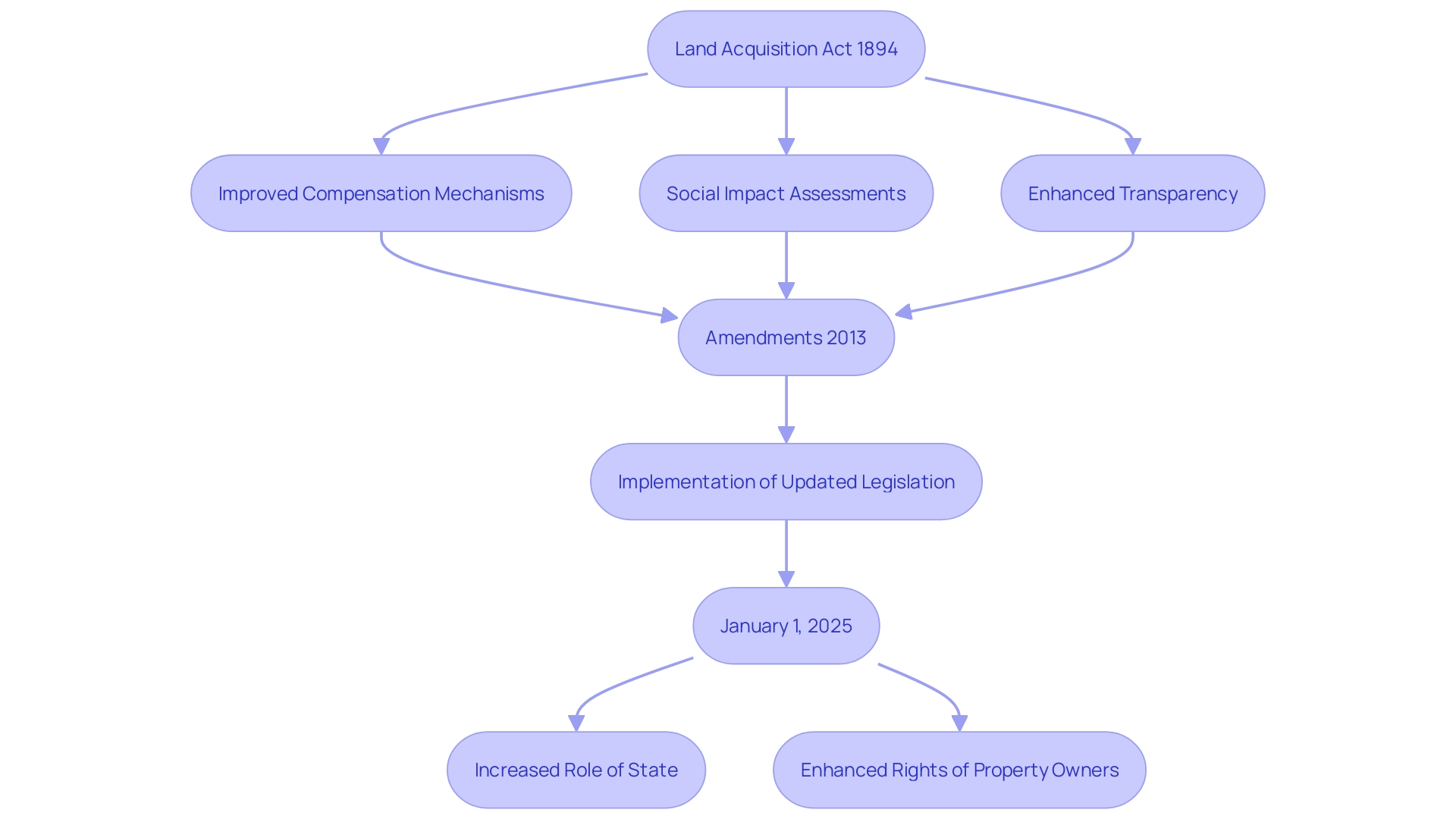
Key Amendments and Developments Post-Independence
After India's independence, the framework of property acquisition regulations experienced significant change, motivated by the twin aims of social justice and economic advancement. This period saw pivotal amendments aimed at striking a balance between governmental needs and the rights of landowners. A notable development was the emphasis on fair compensation and rehabilitation for displaced communities, ensuring that their standard of living was maintained or improved. Anirudh Burman, a research director at Carnegie Endowment India, highlights that reforms in use policy, sale, and transfers of property are essential to address dysfunctional markets for real estate. Furthermore, successful property purchases not only provide fair compensation but also create job opportunities and enhanced amenities for the impacted communities. These legislative advancements signify a transition towards a more inclusive and fair method in property procurement, reflecting the nation's commitment to safeguarding the interests of its citizens while promoting economic growth.
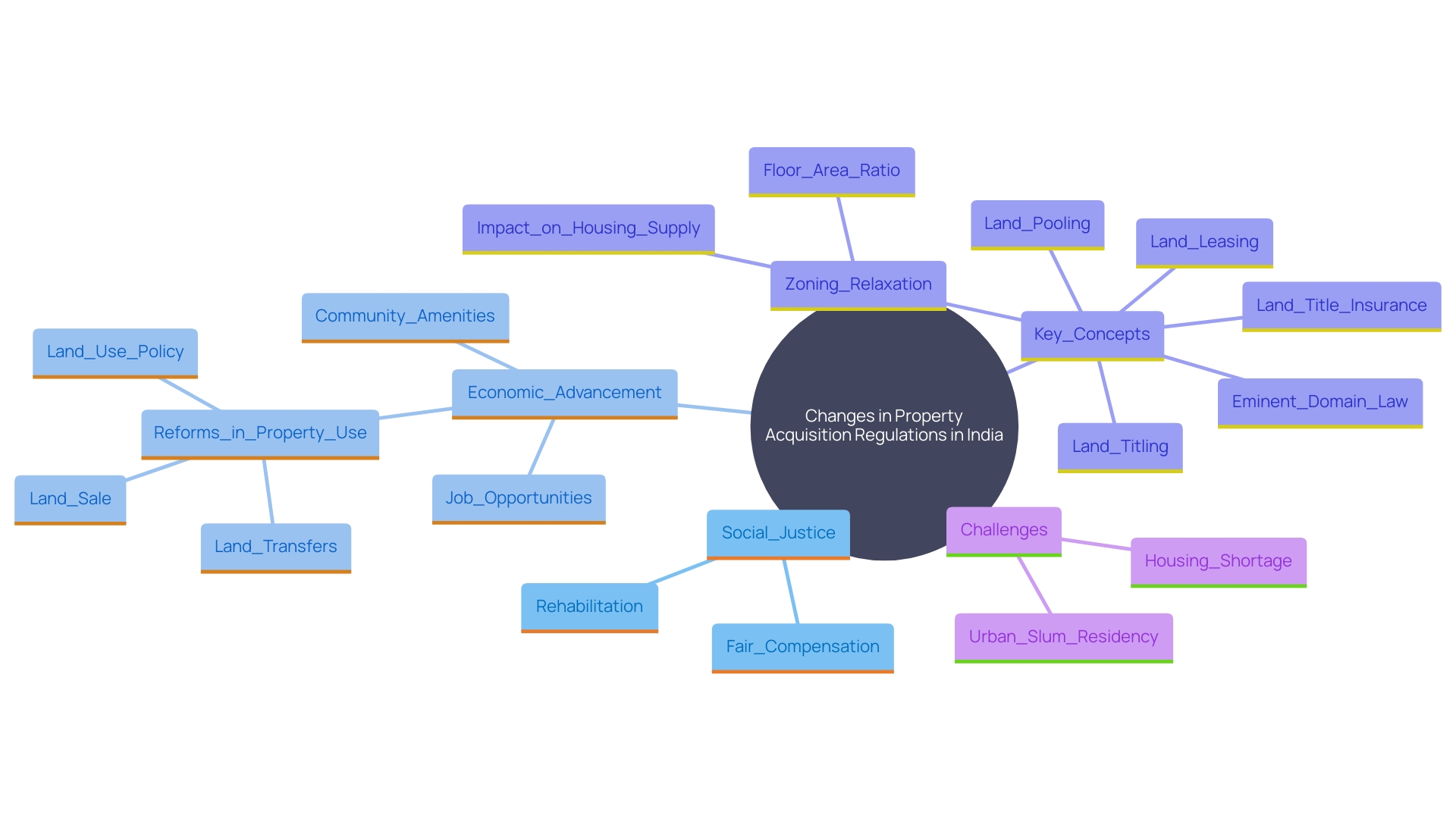
The Land Acquisition Act of 2013: A New Era
The Land Acquisition Act of 2013 signifies a pivotal transformation in India's land acquisition framework. This legislation introduced substantial reforms designed to enhance transparency and fairness. Key provisions include mandating higher compensation rates, conducting social impact assessments, and requiring the consent of landowners. These measures underscore a strong commitment to safeguarding citizens' rights. The Act illustrates how legislative changes can tackle historical grievances and establish the groundwork for more just development methods.
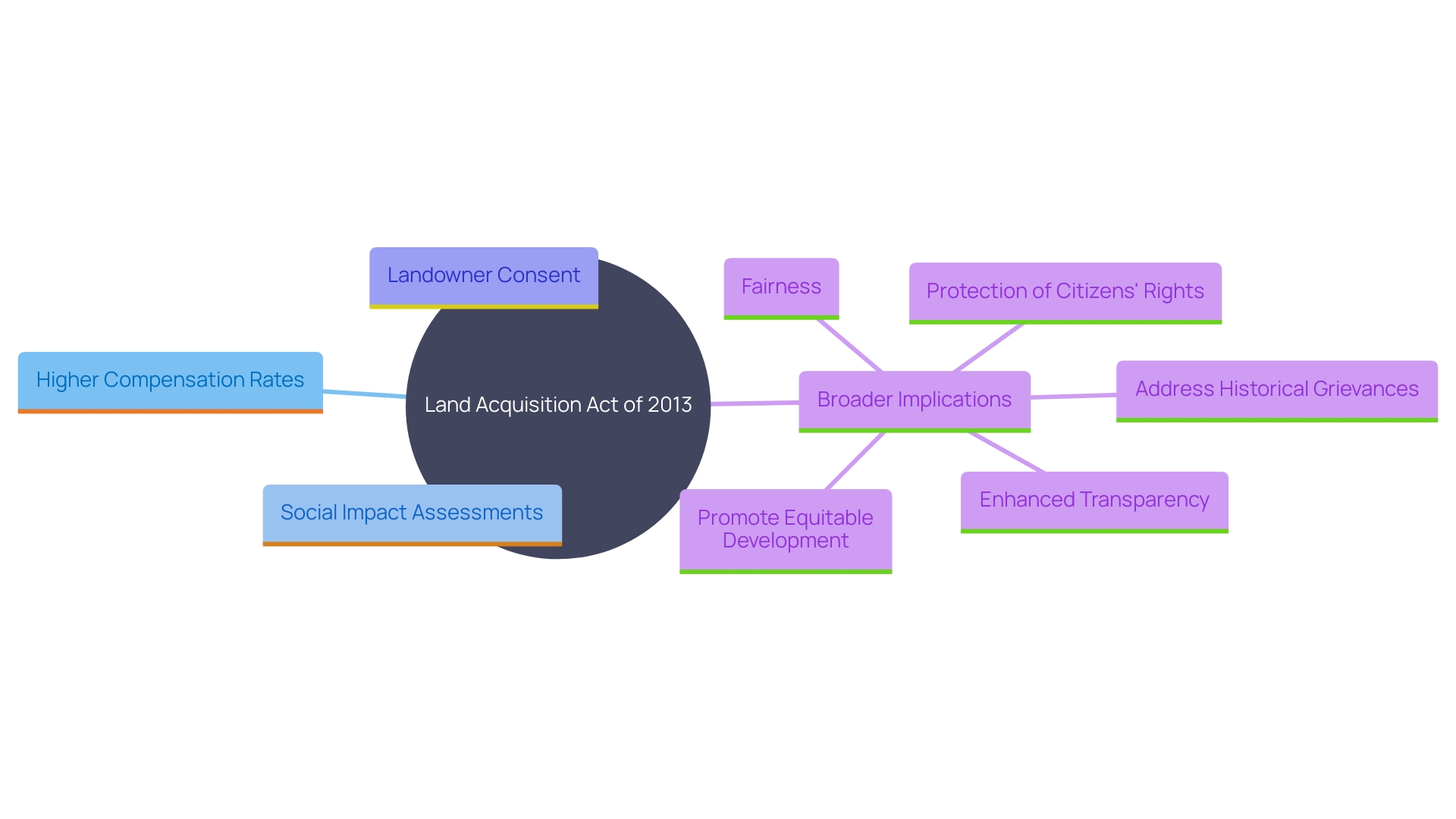
International Perspectives on Land Acquisition: A Comparative Look
Land procurement practices vary significantly across different nations, influenced by cultural, legal, and economic factors. Globally, there is a growing emphasis on ensuring that these processes are fair, transparent, and respectful of human rights. Comparative studies show that many nations are adopting more inclusive methods for obtaining territory, learning from the challenges encountered in their legal frameworks.
One of the critical elements in modernizing property acquisition practices is the use of open data. For instance, open data can support property administration systems for sustainable socio-economic and environmental management. However, it is also essential to ensure that open data does not exacerbate inequalities. 'The digitization of property records in Bangalore, India, serves as a cautionary tale where access to ownership information allowed wealthier individuals and corporations to exploit documentation errors, leading to unequal contests over titles.'.
To mitigate such risks, it is crucial to create conditions that enable effective data use for all, not just the privileged. This involves providing the necessary tools and skills to use data equally. The Land Portal Foundation, for instance, highlights the significance of making property information available to a wider audience to promote improved decision-making and ensure rights to territory for at-risk groups. Their efforts highlight the need for a functioning and inclusive information ecosystem where diverse perspectives are visible and accessible.
In the end, the strengthening of underrepresented communities through efficient data utilization can avert the misuse of information and result in more fair processes for obtaining property. As nations continue to refine their practices, the goal remains to ensure that land acquisition is conducted in a manner that is just and beneficial for all stakeholders involved.
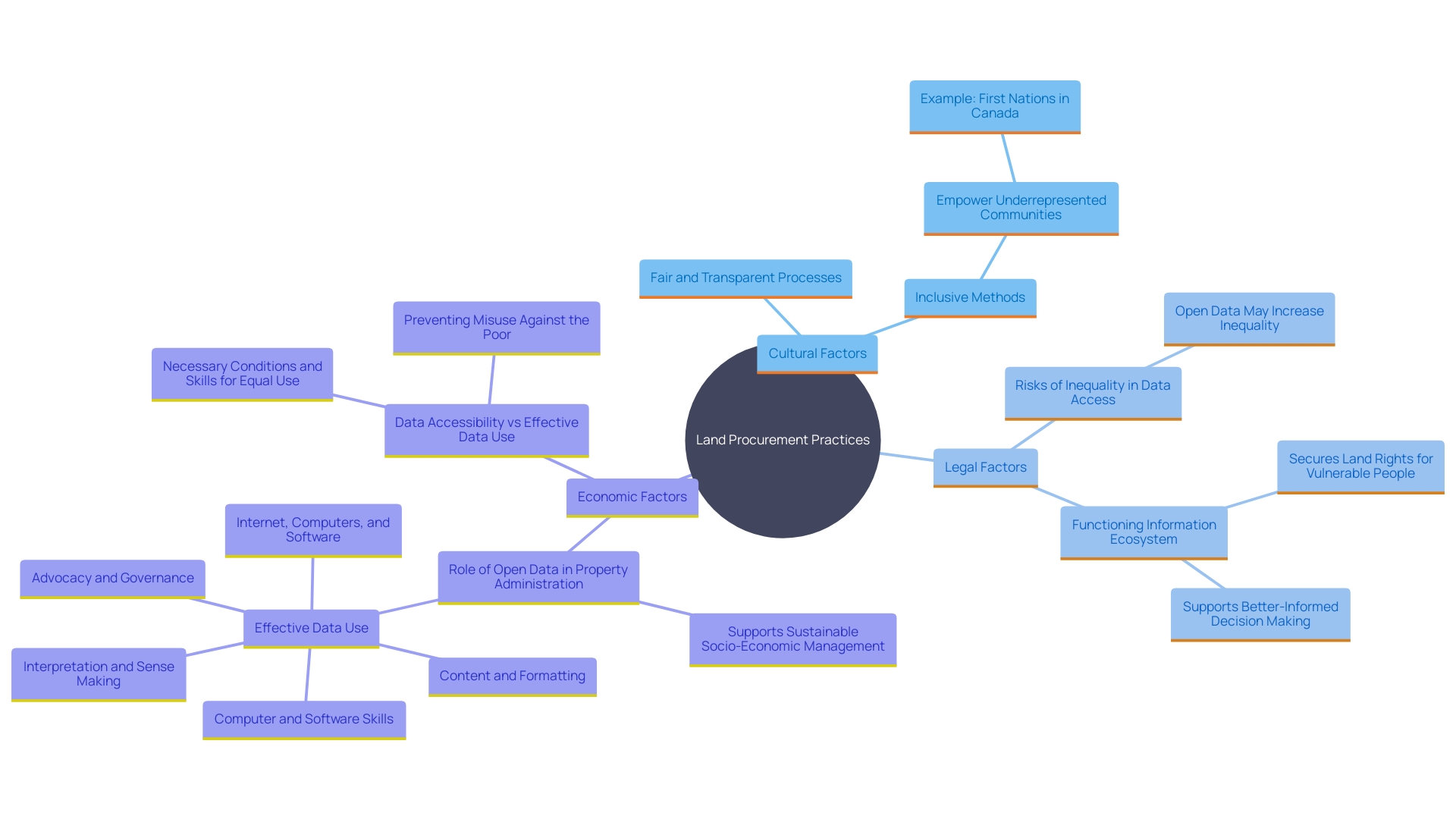
Conclusion
Land acquisition remains a critical issue that encapsulates the delicate interplay between public interest and private rights. The historical evolution of land acquisition laws, particularly the Indian Land Acquisition Act of 1894, has illustrated the complexities inherent in governmental requisitioning of land. While the Act aimed to facilitate infrastructure development, it often led to inadequate compensation for landowners, sparking significant debate about fairness and equity.
Subsequent amendments, culminating in the Land Acquisition Act of 2013, reflect ongoing efforts to rectify these shortcomings. The introduction of higher compensation rates, social impact assessments, and the requirement for landowners' consent marks a significant shift towards protecting the rights of individuals affected by land acquisition. These reforms underscore a commitment to transparency and fairness, aiming to balance governmental needs with the rights of landowners.
International perspectives on land acquisition reveal a global trend towards more equitable practices, emphasizing the importance of fair and transparent processes. The use of open data in land administration systems presents both opportunities and challenges, highlighting the need for inclusive approaches that prevent exploitation and ensure equitable access to information.
In summary, the ongoing evolution of land acquisition laws and practices signifies a broader commitment to social justice and economic development. As nations refine their frameworks, the focus must remain on creating land acquisition processes that are just, transparent, and beneficial for all stakeholders involved.




